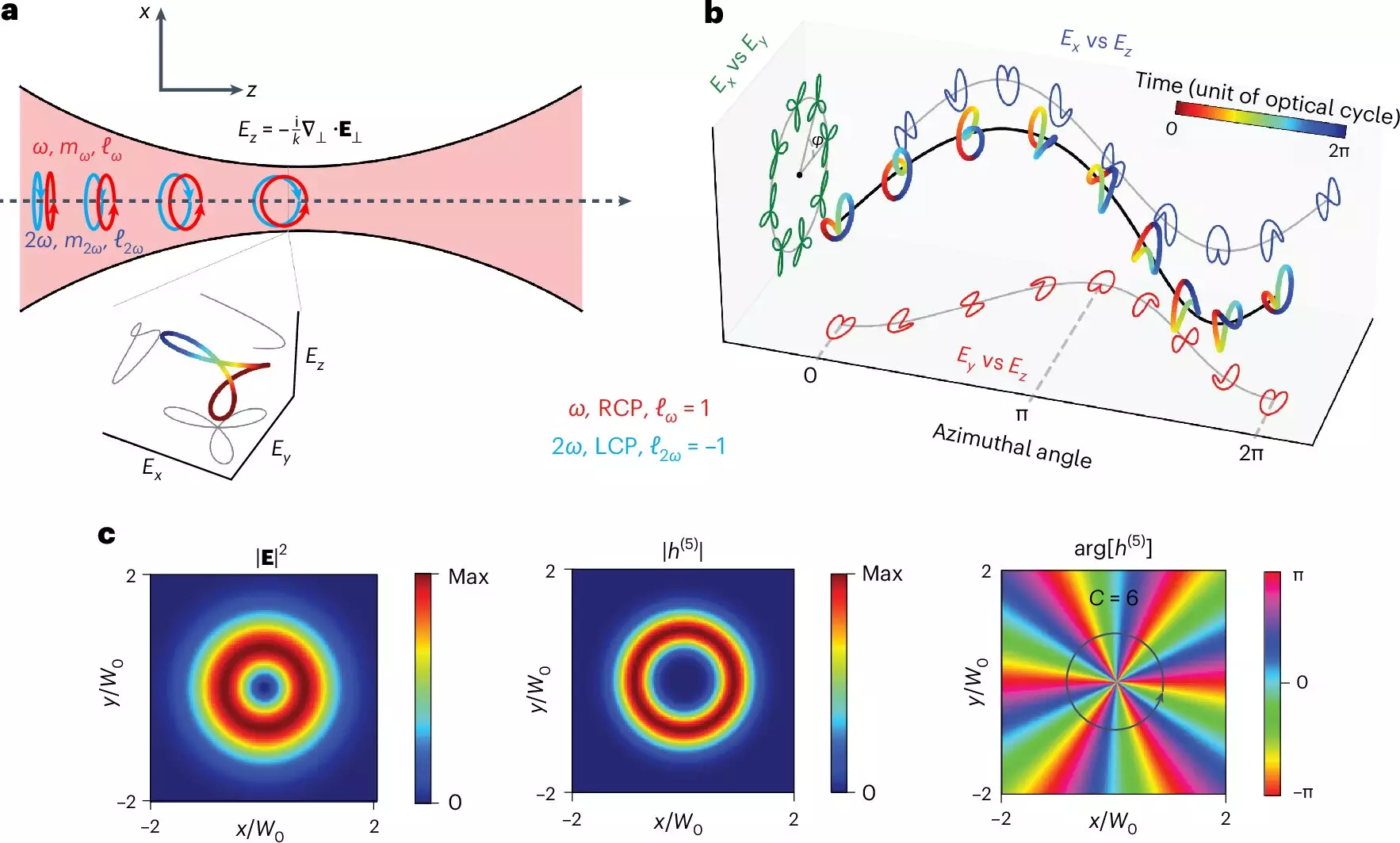Chirality, the property of asymmetry in molecular structures, has significant implications across various scientific fields, with particular relevance in pharmacology. Just as human hands possess distinct right and left configurations that cannot be superimposed on one another, many molecules exhibit a similar duality in their structure—known as enantiomers. The unique interactions these mirror-image molecules have with biological systems can lead to vastly different, sometimes even harmful, effects. The infamous case of thalidomide in the 1950s underscores the critical importance of chirality in drug design and administration. The racemic mixture of this drug resulted in severe birth defects due to the adverse effects of one enantiomer, showing the acute need for precise methods to identify and manipulate molecular chirality.
Traditionally, optical methods have been favored for chirality detection due to their non-invasive nature and ease of use. However, these methods are not without challenges. Accurate identification often necessitates large sample sizes, which can be financially burdensome and logistically complicated. As a consequence, the scientific community has long awaited a breakthrough that could enhance the sensitivity and robustness of chirality measurements.
Recent groundbreaking research led by a collaboration between King’s College London and the Max Born Institute proposes a transformative approach through the innovation of a “chiral vortex.” This novel structure of light is designed to improve the accuracy and reliability of chirality measurements, potentially revolutionizing practices in both chemistry and pharmacology.
The chiral vortex represents a paradigm shift in the application of light for chirality measurement. This structure is characterized by its dynamic electric field that creates a chiral curve, or path, over time, exhibiting varying shapes at different spatial coordinates. The result is a vortex-like form that not only interacts uniquely with chiral molecules but also generates a distinctive pattern of emitted photons during interaction—a phenomenon identified as high-harmonic generation.
The critical enhancement offered by this technique lies in its ability to detect minute differences in molecular handedness. Dr. Nicola Mayer, one of the study’s authors, emphasizes that unlike conventional methods, which struggle in scenarios where chiral molecules are present in nearly equal quantities, the chiral vortex can accurately discern a predominance as small as 1%. This capability is vital in drug development, where such minimal variations could mean the difference between efficacy and dangerous side effects.
Several advantages make the chiral vortex a promising tool for chirality measurement. The vortex structure ensures that the signals generated during experiments are more robust against common interferences. For example, fluctuations in the light’s intensity—which can confound traditional optical chirality detection—are less likely to hinder measurements with this new approach, thereby empowering a broader range of researchers to engage with chirality studies.
Additionally, the chiral vortex’s sensitivity paves the way for insights into the rapid dynamics of electrons within molecules. By capturing this information, scientists could begin to understand and even control chemical reactions through light-based methods, potentially heralding a new era of precision in chemical synthesis and material science.
The implications of this research significantly extend beyond academia. For the pharmaceutical industry, the chiral vortex represents a critical advancement that could enhance safety during drug development, allowing for earlier detection of harmful enantiomers. Moreover, this technology may serve to streamline the entire drug development process by reducing the need for large quantities of samples.
Furthermore, the long-term potential of the chiral vortex could also influence the realm of quantum computing. By encoding information through handedness akin to binary data, this method could notably enhance the processing capabilities of quantum bits, unlocking unprecedented computational power.
As the scientific community continues to grapple with the complexities of molecular chirality, the introduction of the chiral vortex marks a significant milestone. This novel method not only promises to refine chirality detection practices but also has far-reaching implications across diverse fields ranging from pharmacology to quantum computing. By embracing innovative structures of light, researchers are stepping towards a future that enhances our understanding and manipulation of molecular interactions, ultimately leading to safer and more effective therapeutic solutions.

